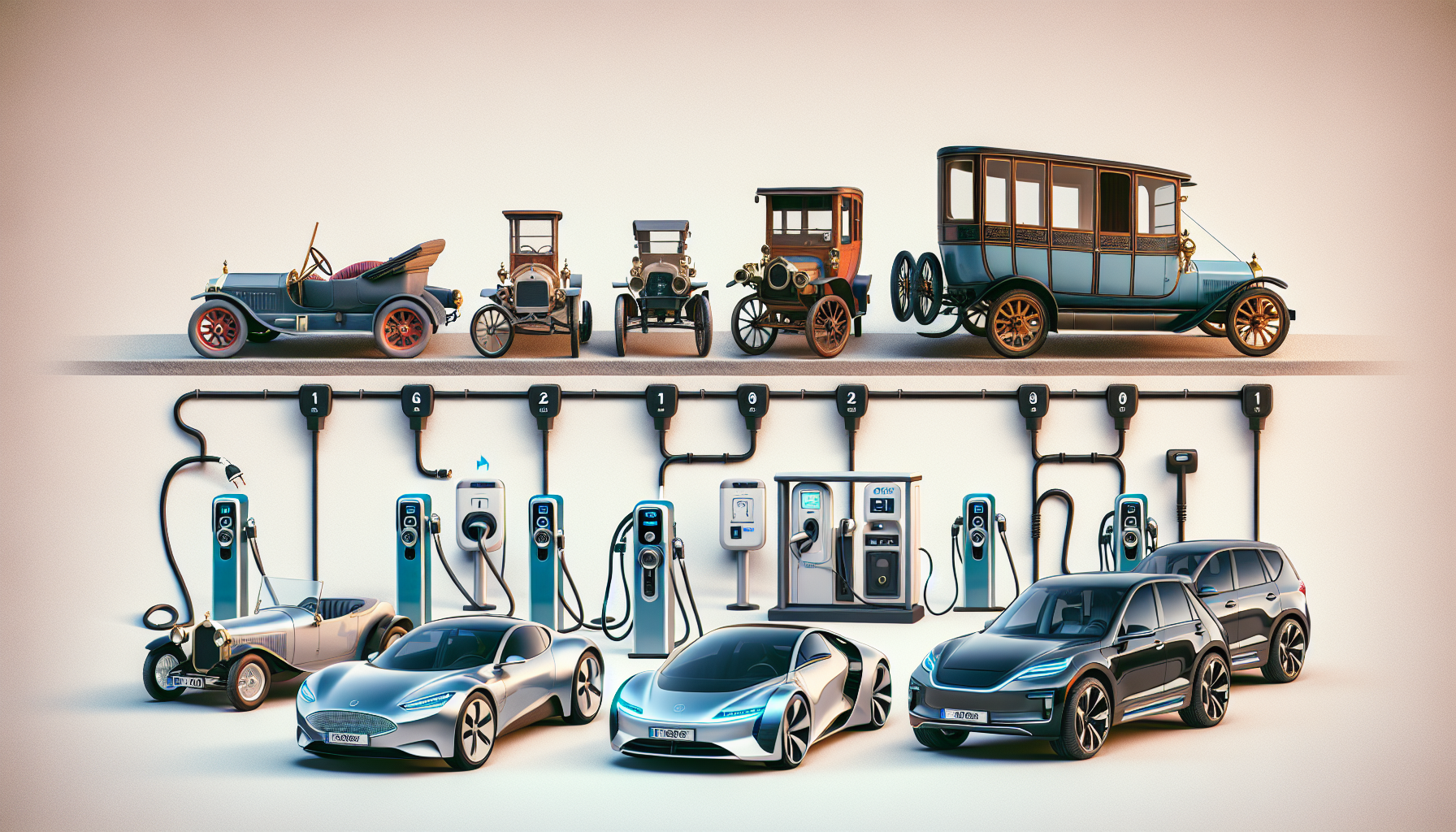A rich history of innovation, competition with internal combustion engines, and a recent surge in environmental concerns marks the journey to modern electric vehicles (EVs). The evolution of electric vehicles represents a fascinating chapter in the annals of transportation, from the initial spark of electrical propulsion to the high-tech EVs navigating our roads today.
Early Innovations
Electric vehicles debuted in the 19th century, shortly after the discovery of the electric motor. Inventors in Europe and the United States began experimenting with battery-powered carriages, and by the late 1800s, a few prototypes and commercial electric cars had emerged. Unlike their gasoline-powered counterparts, these early EVs were famous for their quiet operation and lack of smelly emissions.
By the early 20th century, EVs were on the rise, enjoying a period of prosperity. Electric taxis roamed the streets of New York City, and companies like Detroit Electric and Baker Electric produced thousands of electric cars. However, these early EVs were limited by the day’s technology—primarily lead-acid batteries—which constrained their range and top speeds.
The Rise of Internal Combustion
The tide began to turn with the advent of the Ford Model T in 1908. This gasoline-powered vehicle was affordable and offered greater range and convenience than electric cars. Its proliferation marked a significant shift in consumer preference towards internal combustion engine (ICE) vehicles.
Additionally, the development of the electric starter motor in 1912 eliminated the need for the physically demanding hand-crank start of gasoline engines, further eroding one of the electric car’s advantages. The discovery of vast oil reserves led to a decrease in the cost of gasoline, making ICE vehicles even more attractive. By the 1920s, electric cars had been largely sidelined.
The Quiet Years
For much of the 20th century, electric vehicles remained a curiosity, primarily overshadowed by the dominance of ICE vehicles. However, several factors kept the idea of electric propulsion alive, including concerns over air pollution and the oil crises of the 1970s. Although a few automotive manufacturers explored electric concepts during this period, the lack of significant technological breakthroughs in battery performance meant that EVs could not compete effectively with traditional vehicles.
The Resurgence of EVs
The resurgence of interest in electric vehicles in the late 20th and early 21st centuries is attributed to environmental concerns, technological advancements, and policy incentives. The recognition of climate change and the role of transportation in greenhouse gas emissions spurred research into alternative, cleaner forms of transportation.
In the 1990s, California’s Zero-Emission Vehicle mandate pushed automakers to explore electric options, creating a few short-lived models, such as the General Motors EV1. Although the EV1 was later discontinued, it represented a significant milestone in the modern era of electric vehicles, demonstrating the feasibility of EVs to a new generation.
Modern Battery Technology and EV Proliferation
The evolution of EVs has indeed accelerated with advancements in battery technology. The shift from lead-acid to lithium-ion batteries allowed lighter vehicles with greater energy density, longer ranges, and faster charging times. These improvements, coupled with the growing charging infrastructure network and reduced battery costs, have made electric vehicles more practical and desirable.
Companies like Tesla have played a pivotal role in popularizing EVs and establishing a high-performance, luxury electric car market. Other traditional automakers have followed suit, recognizing the potential of the EV market and investing heavily in electric models. Today, almost every major manufacturer has electric vehicles in its lineup or development, a testament to the dramatic shift in the industry.
The Future of EVs and Sustainable Transportation
Looking toward the future, the continued evolution of electric vehicles hinges on further advancements in battery technology, more efficient production methods, and the expansion of renewable energy sources for electricity generation. The rise of autonomous driving technology also aligns closely with the advent of EVs, promising a new synergy of clean, intelligent transportation solutions.
Conclusion
The evolution of electric vehicles tells a story of persistence and technological triumph. EVs have undergone a significant transformation from their early days as novelties to their contemporary status as symbols of sustainability and innovation. As society progresses towards an increasingly eco-conscious future, the electric vehicle stands at the forefront of a quieter, cleaner, and more efficient mode of transportation, ready to redefine the very fabric of mobility.

